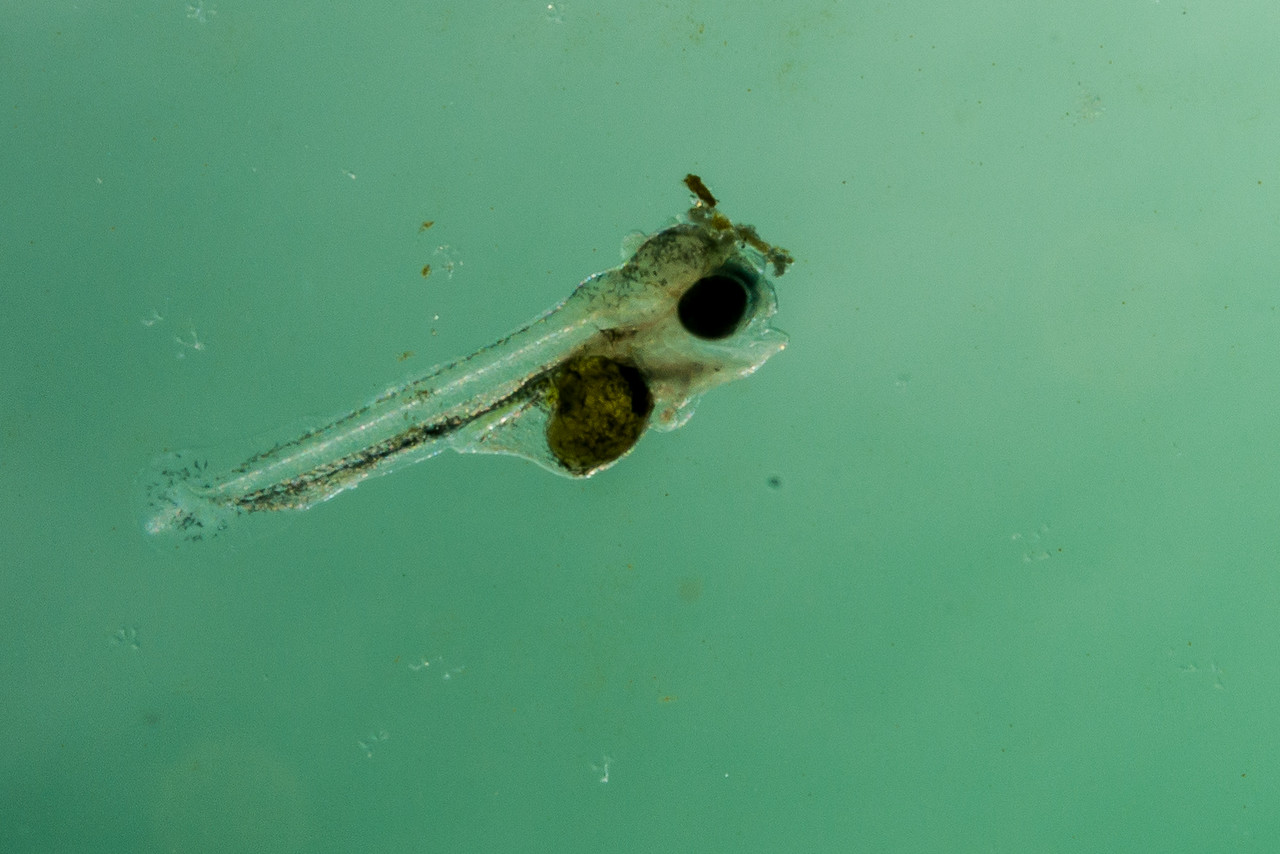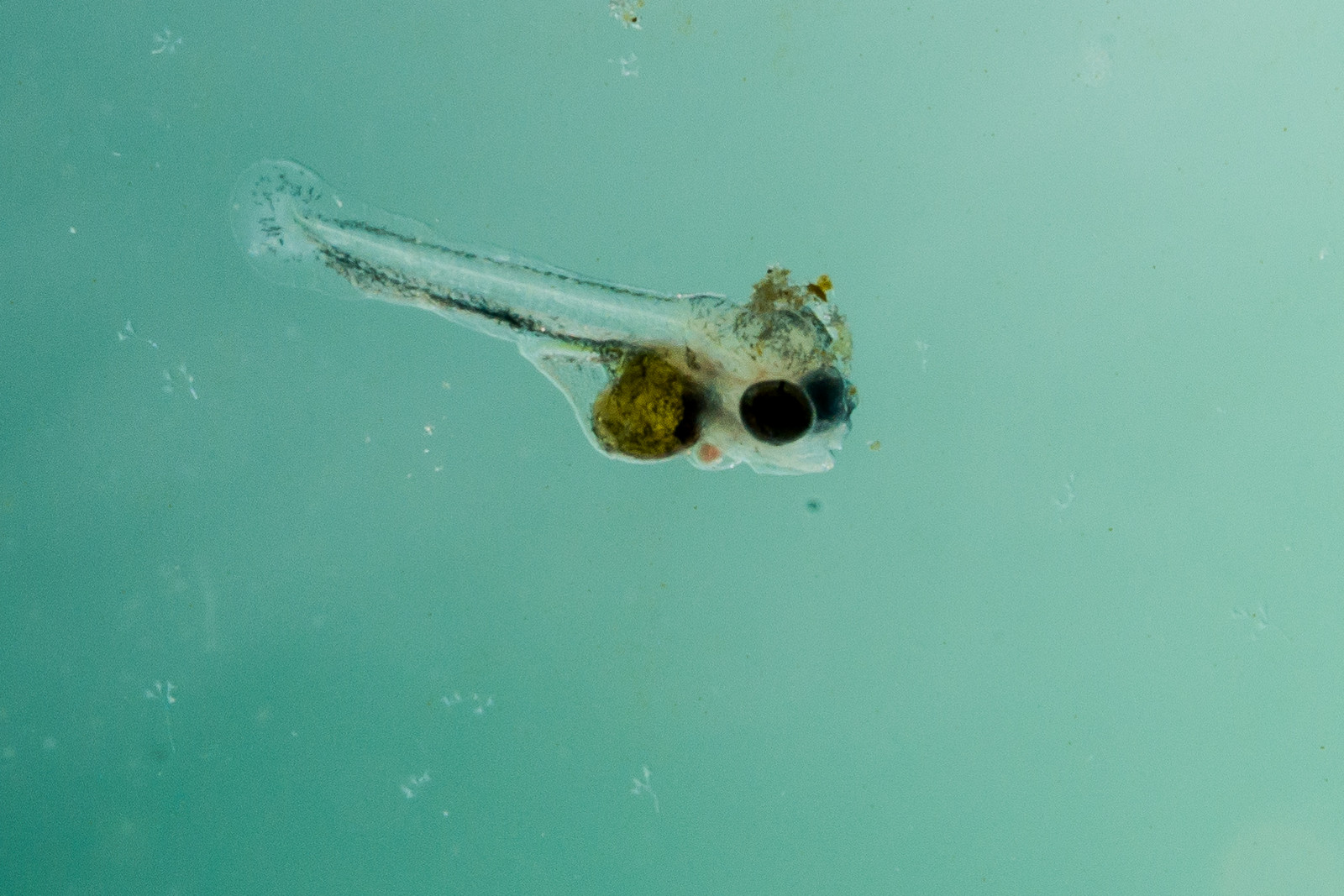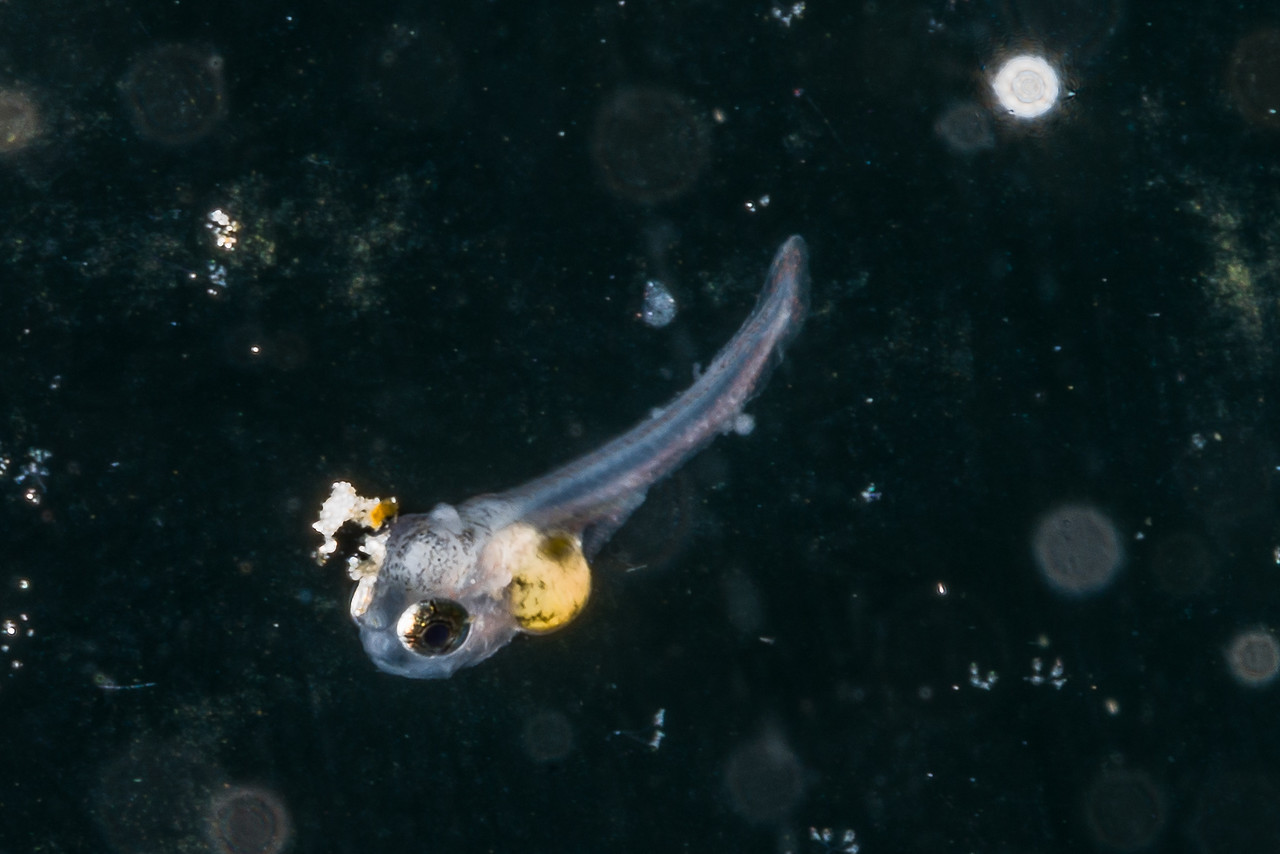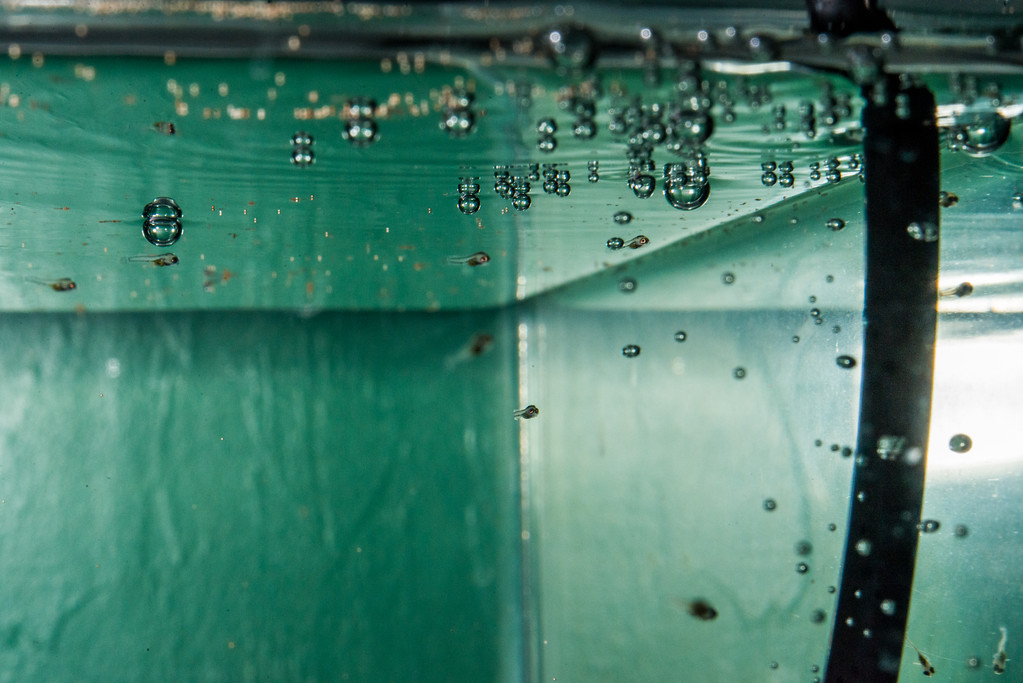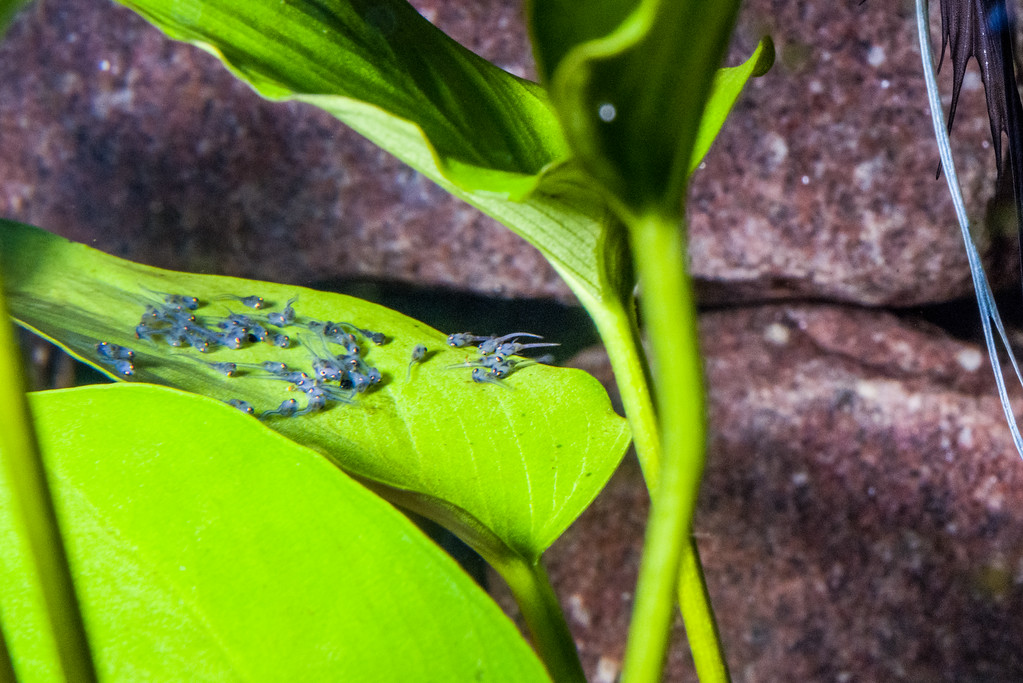Linwood
Aquarium Advice FINatic
Ok, I am NOT set up to raise angels. Much sooner than I expected, two of our angels paired off and started spawning. The first couple they ate, but realized this week they were apparently successful.
Here's the proud mother overlooking her leaf.
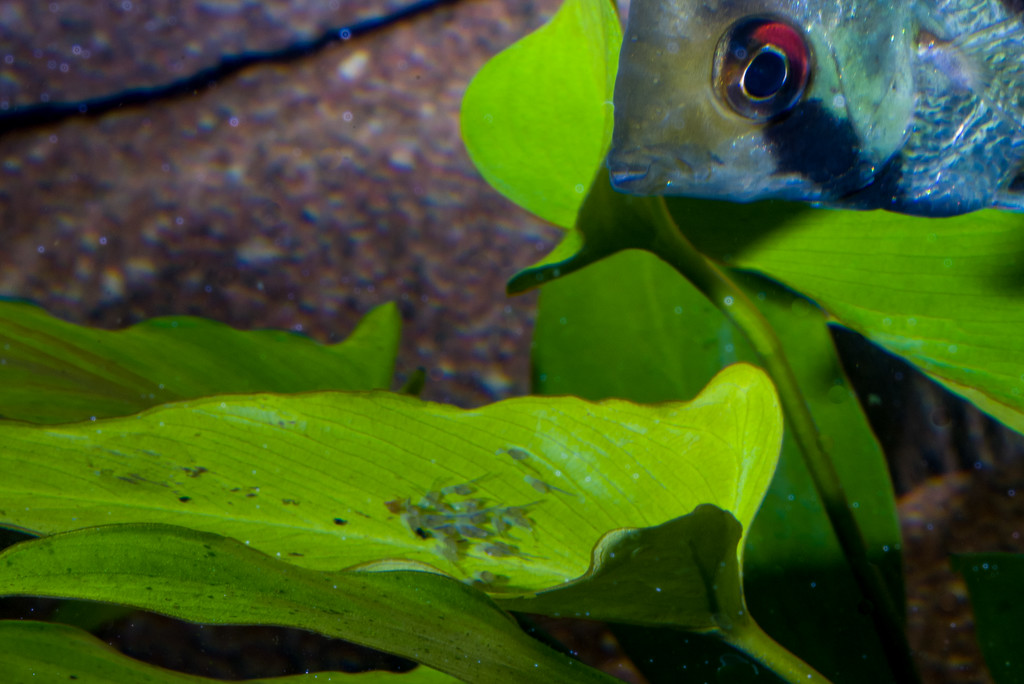
She's not completely faithful, she will come to the feeding corner. So I lured her away, and used a syringe to get about half of the wigglers.
I cleaned out a 10G QT tank (about all I had usable). It has a filter that should be still cycled, and I changed about 98% of the water, got the bottom nice and clean. Water chemistry was mixed to match my main tank where they were laid. There's a scotch brite paid doubled over the HOB filter intake.
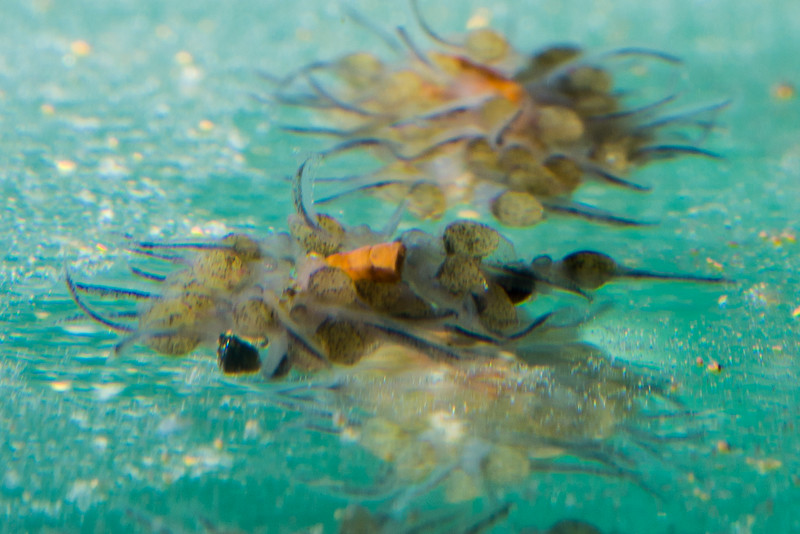
I also put a couple liters of water in a small container, 4 TBS of sea salt, and a few brine shrimp eggs. I also bought some "First bites" and some bottled Rotifers (ok, I asked at three fish stores, what did I expect).
The wigglers are still in a bunch as shown, not separated. I do not know what day the eggs were laid, I know they have been wiggling at least since yesterday.
I'm told they have zero chance in a community tank (220G with angels, congo tetras, plecos). I left half the eggs to encourage the parents and on the off chance they manage to survive (there's a lot of foliage in the tank).
I've watched lots of videos and read lots of stories about the elaborate setups people have for raising angels. Not going to happen, at least not for this brood.
Here's my question: Do they have any chance alone in this 10G tank?
Of the above foods, what's best? I'm guessing the brine shrimp. I also do not think I have much way to take uneaten shrimp away separately from the fish. Maybe, will see.
Am I better off (uneaten food wise) with the "first bites"?
But I have only one air stone -- it's in the shrimp at present. Do I need it in addition to the HOB (small Aqueon 10)? Every article I see mentions air.
Is it worth trying to raise these in this environment?
And finally -- if they survive free-swiming at all, should I add some food to the community tank? It has quite a bit of flow and in relation to their size it is huge -- just dump a bit in and hope it flows past them? Or are they really just food at this point regardless?
Here's the proud mother overlooking her leaf.

She's not completely faithful, she will come to the feeding corner. So I lured her away, and used a syringe to get about half of the wigglers.
I cleaned out a 10G QT tank (about all I had usable). It has a filter that should be still cycled, and I changed about 98% of the water, got the bottom nice and clean. Water chemistry was mixed to match my main tank where they were laid. There's a scotch brite paid doubled over the HOB filter intake.

I also put a couple liters of water in a small container, 4 TBS of sea salt, and a few brine shrimp eggs. I also bought some "First bites" and some bottled Rotifers (ok, I asked at three fish stores, what did I expect).
The wigglers are still in a bunch as shown, not separated. I do not know what day the eggs were laid, I know they have been wiggling at least since yesterday.
I'm told they have zero chance in a community tank (220G with angels, congo tetras, plecos). I left half the eggs to encourage the parents and on the off chance they manage to survive (there's a lot of foliage in the tank).
I've watched lots of videos and read lots of stories about the elaborate setups people have for raising angels. Not going to happen, at least not for this brood.
Here's my question: Do they have any chance alone in this 10G tank?
Of the above foods, what's best? I'm guessing the brine shrimp. I also do not think I have much way to take uneaten shrimp away separately from the fish. Maybe, will see.
Am I better off (uneaten food wise) with the "first bites"?
But I have only one air stone -- it's in the shrimp at present. Do I need it in addition to the HOB (small Aqueon 10)? Every article I see mentions air.
Is it worth trying to raise these in this environment?
And finally -- if they survive free-swiming at all, should I add some food to the community tank? It has quite a bit of flow and in relation to their size it is huge -- just dump a bit in and hope it flows past them? Or are they really just food at this point regardless?

 not so good! Now I bought another thirty gallon tank to move the fry to, but I first have to figure out how to acclimate them to a new tank and how to separate them from very devoted parents. My main tank is 65 gal but the fry are not big enough to join yet.
not so good! Now I bought another thirty gallon tank to move the fry to, but I first have to figure out how to acclimate them to a new tank and how to separate them from very devoted parents. My main tank is 65 gal but the fry are not big enough to join yet. I don't type very fast.
I don't type very fast.

 It's not for the timid.
It's not for the timid. 
